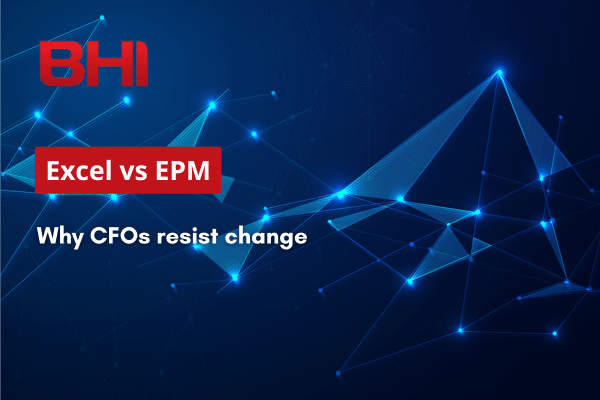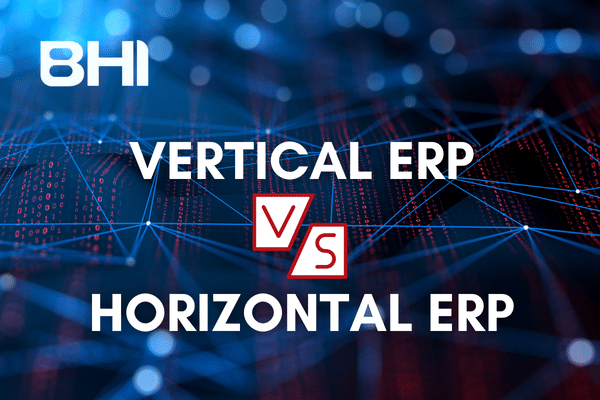In the modern financial landscape, a silent battle rages within the finance departments of French companies. On one side, Excel, the indispensable tool for decades. On the other, EPM (Enterprise Performance Management) solutions, promising efficiency and modernity. Yet, despite the obvious advantages of the latter, many Chief Financial Officers (CFOs) remain firmly attached to their spreadsheets. Why this resistance to change?
Excel’s Hegemony : A 35-Year Reign
Since its launch in 1985, Excel has established itself as the reference tool for financial management. According to a 2024 Deloitte study, 78% of financial decisions rely on data from Excel and 88% of Excel files contain errors. This omnipresence can be explained by several fundamental factors that continue to appeal to finance professionals.
Excel’s flexibility remains its major asset. CFOs can create, modify, and adapt their financial models instantly, without depending on IT teams or external consultants. This autonomy represents considerable power in an environment where responsiveness is crucial. A financial director can develop a new dashboard in a few hours, whereas implementing a similar functionality in an EPM could take several weeks.
The Deep Roots of Resistance
The Technical Comfort Zone
Finance teams’ mastery of Excel represents an investment of several decades. CFOs and their teams have developed sharp expertise, creating complex models sometimes composed of hundreds of interconnected sheets. Abandoning this expertise to learn a new system represents not only a technical challenge but also a profound professional questioning.
Complex formulas, VBA macros, pivot tables: all skills acquired over the years that suddenly seem obsolete when faced with an EPM. This planned obsolescence of their skills generates legitimate anxiety among many financial professionals.
The Myth of Prohibitive Cost
The initial investment in an EPM solution can indeed seem considerable. Between licenses, implementation, training, and change management support, the budget can quickly reach several hundred thousand euros for a mid-sized company. Compared to Excel, whose unit license cost remains modest, the comparison seems unfavorable at first glance.
However, this accounting view obscures Excel’s hidden costs. A 2023 PWC study reveals that 88% of spreadsheets contain errors, and that time spent on verification and correction represents on average 30% of finance teams’ working time. The indirect costs linked to errors, delays in closings, and maintenance of complex Excel files often far exceed the investment in an EPM over a 3 to 5-year period.
Fear of Losing Control
Excel offers total transparency: every formula is visible, every calculation can be verified cell by cell. This transparency reassures CFOs who can “see” exactly how their numbers are calculated. EPM solutions, with their sophisticated calculation engines, often appear as “black boxes” where the processing logic seems opaque.
This perception, although largely unfounded with modern solutions, fuels persistent mistrust. CFOs fear losing control of their data and becoming dependent on external consultants to understand their own figures.
Excel’s Limits Facing Modern Challenges
The Data Volume Explosion
Modern companies generate exponential volumes of data. Excel’s technical limitations (1,048,576 rows per sheet) quickly become problematic. CFOs find themselves juggling dozens of files, multiplying error risks and complicating consolidation.
EPM solutions like OneStream or CCH Tagetik can process billions of data lines without slowing down, offering scalability that Excel simply cannot match. This capability becomes crucial in a context where predictive analytics and Big Data are transforming the finance function.
Real-Time Collaboration
The COVID-19 pandemic highlighted Excel’s limitations in terms of collaboration. Multiple versions of the same file circulating by email, modification conflicts, the inability to work simultaneously on the same document: all frictions that slow down financial processes.
Modern EPMs offer native collaborative environments where multiple users can work simultaneously on the same data, with complete traceability of modifications and an integrated validation system.
Regulatory Compliance
Growing regulatory requirements (IFRS, CSRD, SOX) impose levels of traceability and audit that Excel struggles to satisfy. Process documentation, modification traceability, access security: all critical aspects where EPMs naturally excel.
The Tangible Benefits of EPM Solutions
Intelligent Automation
Modern EPM solutions integrate advanced automation capabilities. Data collection, validation, and consolidation processes that took weeks with Excel can be reduced to a few days, or even hours. This automation frees finance teams from repetitive tasks to focus on analysis and strategic advisory.
Data Reliability
The uniqueness of the data source in an EPM eliminates problems of multiple versions and inconsistencies. Integrated validation mechanisms guarantee data quality from entry. According to a 2024 Gartner study, companies using an EPM report a 75% reduction in errors in their financial reporting.
Strategic Agility
EPMs’ simulation and planning capabilities allow CFOs to quickly model different strategic scenarios. This agility becomes a major competitive advantage in an uncertain economic environment where the ability to adapt quickly makes the difference.
Overcoming Resistance: A Pragmatic Approach
Change Management Support
The success of a migration to an EPM relies primarily on human support. Training must be personalized, progressive, and oriented toward users’ concrete use cases. Involving key users from the design phases creates internal champions who will facilitate adoption.
Transitional Coexistence
Rather than a brutal migration, a coexistence approach allows for a smooth transition. Modern EPMs offer Excel import/export capabilities that allow maintaining certain familiar processes while progressively benefiting from the new solution’s advantages.
Demonstration by Value
Pilot projects on limited perimeters allow concrete demonstration of EPMs’ added value. A budget process on a subsidiary, a monthly consolidation on a restricted perimeter: all opportunities to prove benefits without risking the entire financial system.
The Future of the Finance Function
The digital transformation of the finance function is no longer an option but a necessity. CFOs who persist in relying exclusively on Excel risk seeing their company lose competitiveness. New generations of financial professionals, digital natives, expect modern and collaborative tools.
Artificial intelligence and machine learning, already integrated into new-generation EPMs, promise to further revolutionize the finance function. Predictive capabilities, intelligent automation of entries, anomaly detection: all functionalities impossible to implement effectively in Excel.
Conclusion
CFOs’ resistance to change toward EPM solutions is rooted in legitimate fears and deeply ingrained habits. However, Excel’s limitations in the face of modern challenges are becoming increasingly evident. The benefits of EPMs in terms of reliability, efficiency, and strategic agility largely justify the investment and transformation effort.
The real issue is not whether companies will migrate to EPM solutions, but when and how they will do so. Visionary CFOs who embrace this transformation today position their company to succeed in tomorrow’s digital economy.
Ready to Take the Step Toward a Modern EPM Solution ?
Contact us today or via our form to evaluate together how an EPM solution can transform your finance function. Our experts are ready to listen and build with you the roadmap for your digital transformation.

















